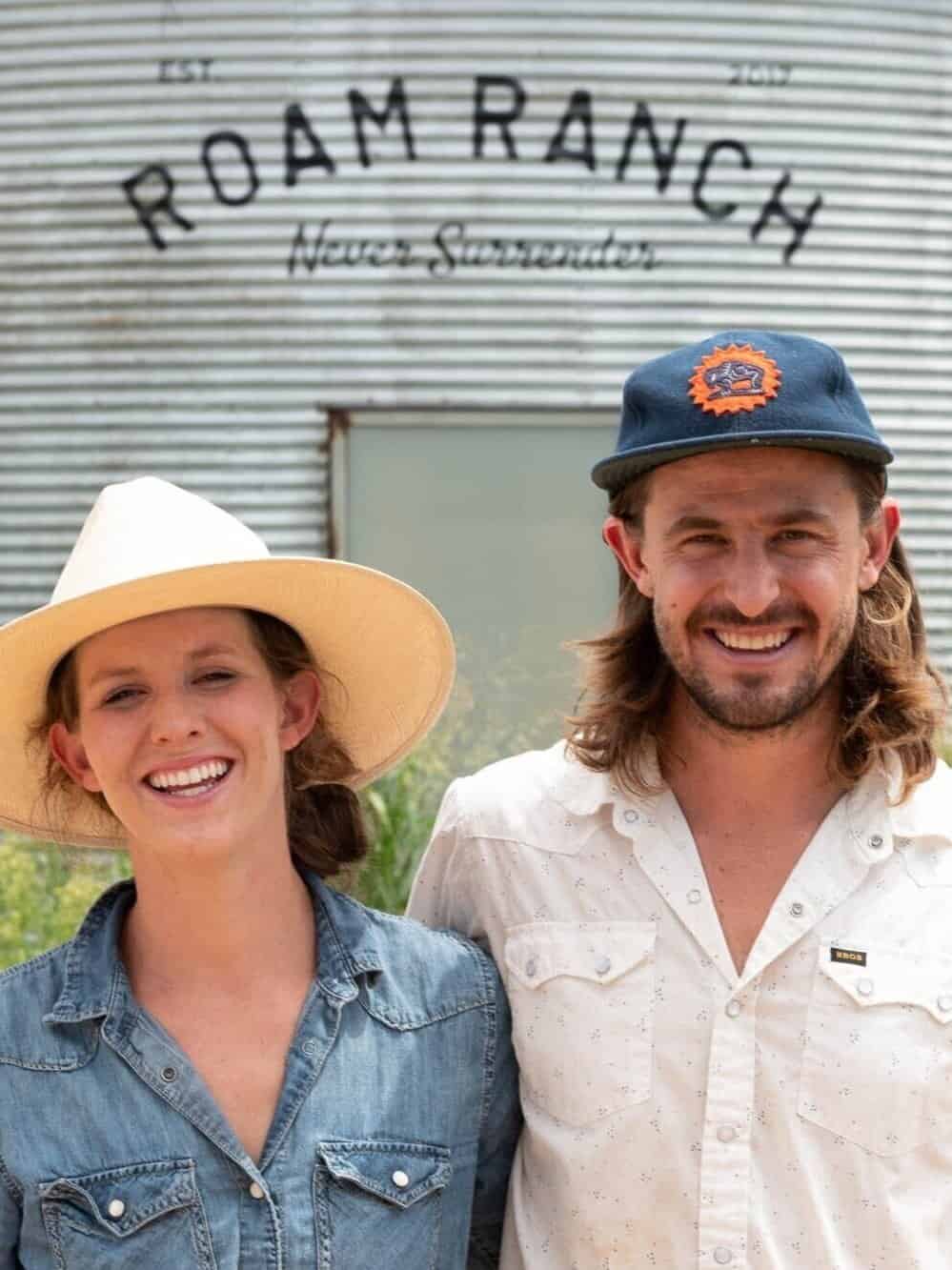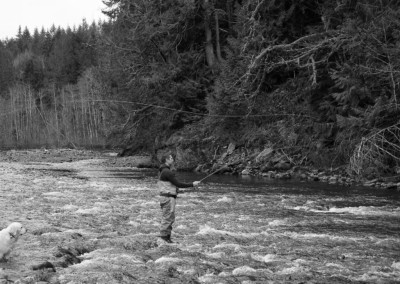Your cart is empty


In the wake of fires set purposefully ablaze across the southern Amazon earlier this year to create more land for cattle grazing, coupled with cattle ranked at the very top of the list of agriculture’s contributors to annual greenhouse gas emissions worldwide, it’s safe to say that the beef industry and animal agriculture are facing a crisis. Many are calling for humans to simply eat less meat and more alternative protein products, as if this might be the golden ticket to reverse climate change, improve human health and end factory farming.
But bison ranchers Katie Forrest and Taylor Collins have a different idea: the way to save the planet is not to eat less meat, it’s to eat better meat.
Six years ago, as avid athletes competing in marathons and Ironman races, Katie and Taylor were practicing vegans. They trusted the conventional wisdom of the time — which prescribed superior athletes a high carbohydrate, low-fat diet, and little to no meat consumption
When Katie found that her body was still breaking down, despite adhering to a strict “clean diet,” she figured she must not be eating “clean” enough. She decided to go from vegetarian to vegan, thinking that would make her feel better, faster, stronger. Instead, her body continued to degenerate. Katie visited more than five health practitioners in Austin, who prescribed treatments from arthritis medication to exploratory knee surgery, with no positive results. She then visited a holistic health practitioner who recommended radically shifting her diet of grains, tofu, soy and highly processed proteins to one of high quality, grass-fed animal proteins. Katie was desperate to feel better and to perform at her best, so she committed to the shift.

“Taylor and I are pretty extreme in things we commit to. If we’re going to sign up for a triathlon, we’re going to sign up for an Ironman; if we’re going to commit to a diet, we’re going to go hardcore,” Katie said. “Within four days of transitioning, my gastrointestinal issues, joint inflammation and pain went away completely. At that point, it became very clear how important animal protein is for me, and I assumed for most other people.” Katie and Taylor felt so strongly about sharing the positive changes that well-sourced meat brought to their health that they built EPIC Provisions and the first 100%-grass-fed meat bar.
That was just the beginning.
By 2016, EPIC Provisions had become a household name in the food bar industry; demand from athletes, outdoor adventurers and health-conscious consumers for high quality animal protein led to the company’s great success. But, Katie and Taylor were called to do more. The Austin natives sold EPIC to General Mills and bought what would become ROAM Ranch by piecing together ground in Texas’ Hill Country, where they now raise their young daughter, Scout. They tend 900 acres, which serves as home to grass-fed bison, heritage pigs, turkeys, laying hens, broilers and habitat for wild herds of axis and white-tailed deer, with the help of ranch managers Julia Mitchell and Cody Spencer. To help revive their pastures, the ROAM team plants diverse seasonal cover crops like buckwheat, crimson clover and millet, which act to increase the fertility of the soil. When Katie and Taylor started to build their home on ROAM Ranch, they saw it as an opportunity to get their hands dirty by diving deeper into caring for land and learning what it truly means to participate in regenerative agriculture.
Over the summer, I had the opportunity to spend time on ROAM and learn about the greater vision Katie, Taylor, Julia and Cody have for agriculture, as well as for our planet and how we think about land.
Being a land manager from a less-than agrarian upbringing, I was interested in how two young people raised outside of ranching came to tend a herd of bison in rural Texas and make their lives’ work about raising meat differently. It struck me deeply that Katie and Taylor could probably do anything or be anywhere they’d like in the world given their success, yet I find them here on this piece of Texas ground in muddy boots and ball caps. Every day, they face the difficult choices that ranching requires, from troubleshooting irrigation pivots to culling a young turkey suffering from ailment, or caring for an orphaned bison calf
I asked Taylor about his personal journey in making the connection between food and land.
“You know, I never thought that this would be an option for us — having land, raising animals, and being a true part of this regenerative movement in agriculture,” he said. “It didn’t ever feel like something we would be able to do. We grew up in the city. I think it is so unbelievable that eating the right high-quality meat could fix Katie’s body. We started asking the question: why can’t this meat fix the land through management as well? If it has the power to change your biome, reduce inflammation, and increase your vitality, there must be a connection to that animal, that living being, and the environment that it’s living in.”
Katie and Taylor started becoming more interested and engaged in sharing how ROAM’s land management practices were both improving soil health and the lives of the animals raised on the ranch’s landscape.
“When you choose and consume regenerative meat, you are actually sequestering carbon into the soil,” Katie explained. “That’s so powerful. Everyone should be talking about this. Every single person in this country should know the power of regenerative agriculture.”

Through their influence, EPIC Provisions funded a study based on a Georgia ranch called White Oak Pastures to examine the impacts of grazing livestock on soil carbon sequestration. The carbon footprint of White Oak Pastures’ grass-fed, regeneratively grazed beef measures 111% lower than a conventional U.S. beef system and is more climate friendly than plant-based and alternative protein, including the Beyond Burger and Impossible Burger.
“Even now, when we sell and market meat and build brands, we’re rallying around the regenerative movement,” she went on.
“Why? Because there’s 60 harvests left on the planet at our current industrialized, extractive agricultural state. That’s 60 harvests, 60 years of food production. This regenerative path forward is the only path forward. Without it, there is no solution. We’re just going to run off that cliff.
An important initiative of ROAM Ranch is community building and educating consumers about how to better harness dollars to impact this movement and source better, healthier foods. As I walk through the pasture with Katie, watching the bison graze, I ask what’s the most powerful thing we can do as consumers. Katie thinks for a moment, looking out across the land. “When you choose meat that’s coming from White Oak Pastures and other verified regenerative ranches, every pound on your plate is capturing up to three-and-a-half pounds of carbon and storing it in the soil. So, yeah, you can eat meat, and that’s our greatest tool for combating climate change.” Katie is right. A certain amount of greenwashing exists in the meat industry, and there is a definite lack of clarity and consumer awareness across labels and certifications. How do you know if your ground bison is truly grassfed? Is your steak helping to regenerate soils or allowing for continued environmental degradation? ROAM is hoping to offer answers to these questions with their meat.
“We believe everybody should have access to this,” she answered, “That’s why we decided to help build a new regenerative meat brand, Force of Nature. Everyone should be able to vote with their dollars for this system of food production anywhere they shop. They shouldn’t just be limited to the farmers market. It should be the norm, not the exception.” By supporting brands like this, by using purchasing power to amplify our voices, we can make a difference and contribute to a future that’s less bleak.

With a growing lack of public awareness around the meat supply chain, there’s less connection with seeing the whole animal and understanding where meat comes from. In addition to meeting standards of animal welfare, soil health principles, and humane slaughter, the Force of Nature brand and ROAM Ranch want people to recognize that there’s a living, sentient being behind every piece of meat that they eat. Instead of shying away from discussing animal harvest, Katie and Taylor plan on developing mobile slaughter units to address fragmentation in the bison supply chain. Katie considers the impact of connecting people with their food in a more intimate way.
“If we can bridge the gap for consumers recognizing how their meat was truly raised and slaughtered, people are going to be much less wasteful, and they’re going to be more aware and conscious of where they purchase their meat. I think every meat-eater needs to be comfortable seeing that side of their decision.”
I asked Katie a final question as we sat around the dinner table: by dedicating her life to building revolutionary brands, re-imagining a regenerative meat supply chain to more deeply connect us to our food, and through her work rebuilding land, what legacy does she hope to leave her young daughter, Scout? The table went silent, and the emotion in her answer made it clear that this legacy is the root of it all.
“I want there to be land for her. I hope that there’s access to water. I’m excited to leave her with a connection to animals that she truly knew her whole life. I want to leave her with purpose and an opportunity to be connected to the earth in a really intimate way.” Katie paused. “There is also a healthy amount of despair to know what’s at stake with the climate and our planet, what we’re up against and the action that must be taken. But this is how you do it — what we’re doing on this ranch. All we have to do is increase soil carbon by .04%. There’s no technology or human-created tool. The answer is grasslands. It’s thriving grasslands with ruminants, and that idea makes me hopeful. I want to leave my daughter with a sense of hope.”
As a young person and a rancher myself, I feel both a privilege and a burden of access into the state of our food system and how our working lands are regarded. The inherent closeness to the meat supply chain that comes from securing a livelihood in ranching, and bearing witness to the widespread misinformation around regenerative animal protein and its impact on our grasslands and climate, sometimes leave me with a sense of despair. The visceral image of 60 harvests left on the planet can leave us feeling hopeless when acting and operating as individuals.
What makes me hopeful are stories like Katie’s, because in many ways, it’s my story as well. I’ve been given the unique position to tell the story of ROAM Ranch and harness it for the purpose of helping people understand the opportunity to restore ecosystems, their individual potential to alter the trajectory of food production through demand, to help realize a shared and common legacy of re-imagining our relationship to the land. Katie is using her life, her ranch, and all the resources available to her to create a small ripple in the status quo of large-scale agriculture. The purpose of this story and the common thread of all our stories is to create small ripples. By nature, ripples grow and expand, and big ripples have the potential to create real change. That’s what gives me hope.

Related Stories



Latest Stories


